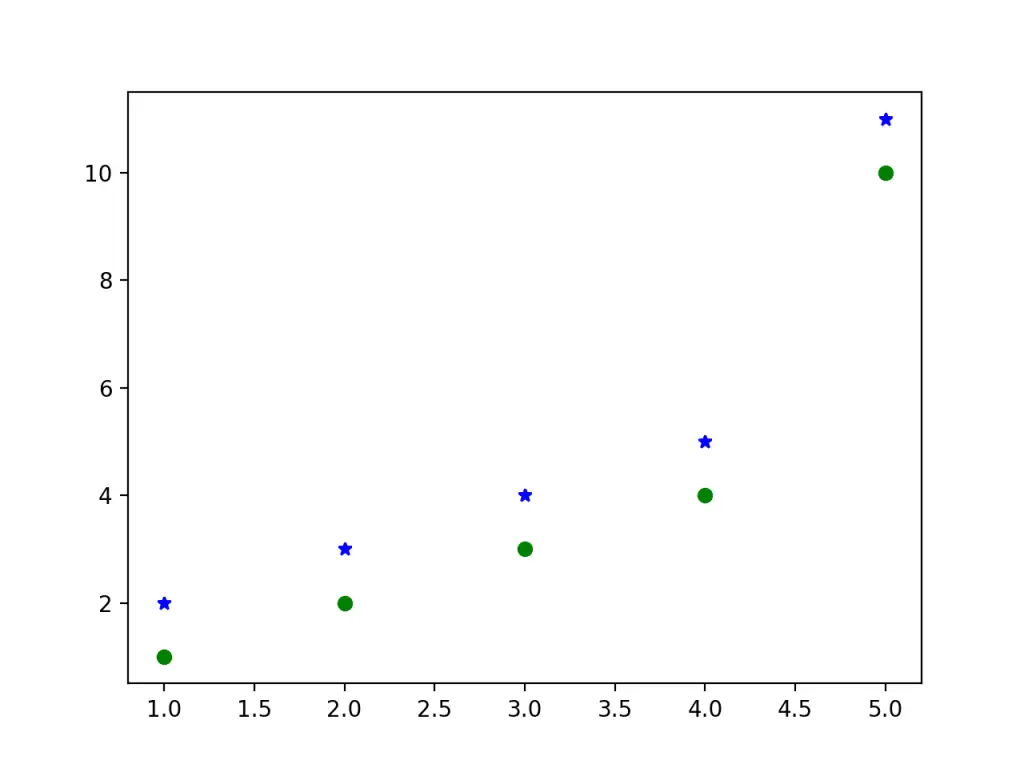- Python matplotlib module provides us with various functions to plot the data and understand the distribution of the data values. The matplotlib.pyplot.bar function is used to create a Bar plot using matplotlib module.
- Graph Plotting in Python Python Server Side Programming Programming Python has the ability to create graphs by using the matplotlib library. It has numerous packages and functions which generate a wide variety of graphs and plots.
- Formatting your Python Plot. A third argument will let you choose the color and the line type of the plot in Python Programming Language. The default format string gives us a solid blue line, as we’ve seen in the examples so far. You see, these strings are from MATLAB. plt.plot(2,3,4,5,3,8,10,12,'gs').
A compilation of the Top 50 matplotlib plots most useful in data analysis and visualization. This list helps you to choose what visualization to show for what type of problem using python's matplotlib and seaborn library. Plotly's Python graphing library makes interactive, publication-quality graphs. Examples of how to make line plots, scatter plots, area charts, bar charts, error bars, box plots, histograms, heatmaps, subplots, multiple-axes, polar charts, and bubble charts.
A Q-Q plot, short for “quantile-quantile” plot, is often used to assess whether or not a set of data potentially came from some theoretical distribution. In most cases, this type of plot is used to determine whether or not a set of data follows a normal distribution.

This tutorial explains how to create a Q-Q plot for a set of data in Python.
Example: Q-Q Plot in Python
Suppose we have the following dataset of 100 values:
To create a Q-Q plot for this dataset, we can use the qqplot() function from the statsmodels library:
In a Q-Q plot, the x-axis displays the theoretical quantiles. This means it doesn’t show your actual data, but instead it represents where your data would be if it were normally distributed.
Make Plots With Python
The y-axis displays your actual data. This means that if the data values fall along a roughly straight line at a 45-degree angle, then the data is normally distributed.
We can see in our Q-Q plot above that the data values tend to closely follow the 45-degree, which means the data is likely normally distributed. This shouldn’t be surprising since we generated the 100 data values by using the numpy.random.normal() function.
Scientific Plots With Python
Consider instead if we generated a dataset of 100 uniformally distributed values and created a Q-Q plot for that dataset:
Making Plots With Python
The data values clearly do not follow the red 45-degree line, which is an indication that they do not follow a normal distribution.
Plotting Data In Python

Notes on Q-Q Plots
Keep in mind the following notes about Q-Q plots:

This tutorial explains how to create a Q-Q plot for a set of data in Python.
Example: Q-Q Plot in Python
Suppose we have the following dataset of 100 values:
To create a Q-Q plot for this dataset, we can use the qqplot() function from the statsmodels library:
In a Q-Q plot, the x-axis displays the theoretical quantiles. This means it doesn’t show your actual data, but instead it represents where your data would be if it were normally distributed.
Make Plots With Python
The y-axis displays your actual data. This means that if the data values fall along a roughly straight line at a 45-degree angle, then the data is normally distributed.
We can see in our Q-Q plot above that the data values tend to closely follow the 45-degree, which means the data is likely normally distributed. This shouldn’t be surprising since we generated the 100 data values by using the numpy.random.normal() function.
Scientific Plots With Python
Consider instead if we generated a dataset of 100 uniformally distributed values and created a Q-Q plot for that dataset:
Making Plots With Python
The data values clearly do not follow the red 45-degree line, which is an indication that they do not follow a normal distribution.
Plotting Data In Python
Notes on Q-Q Plots
Keep in mind the following notes about Q-Q plots:
- Although a Q-Q plot isn’t a formal statistical test, it offers an easy way to visually check whether or not a data set is normally distributed.
- Be careful not to confuse Q-Q plots with P-P plots, which are less commonly used and not as useful for analyzing data values that fall on the extreme tails of the distribution.
You can find more Python tutorials here.
